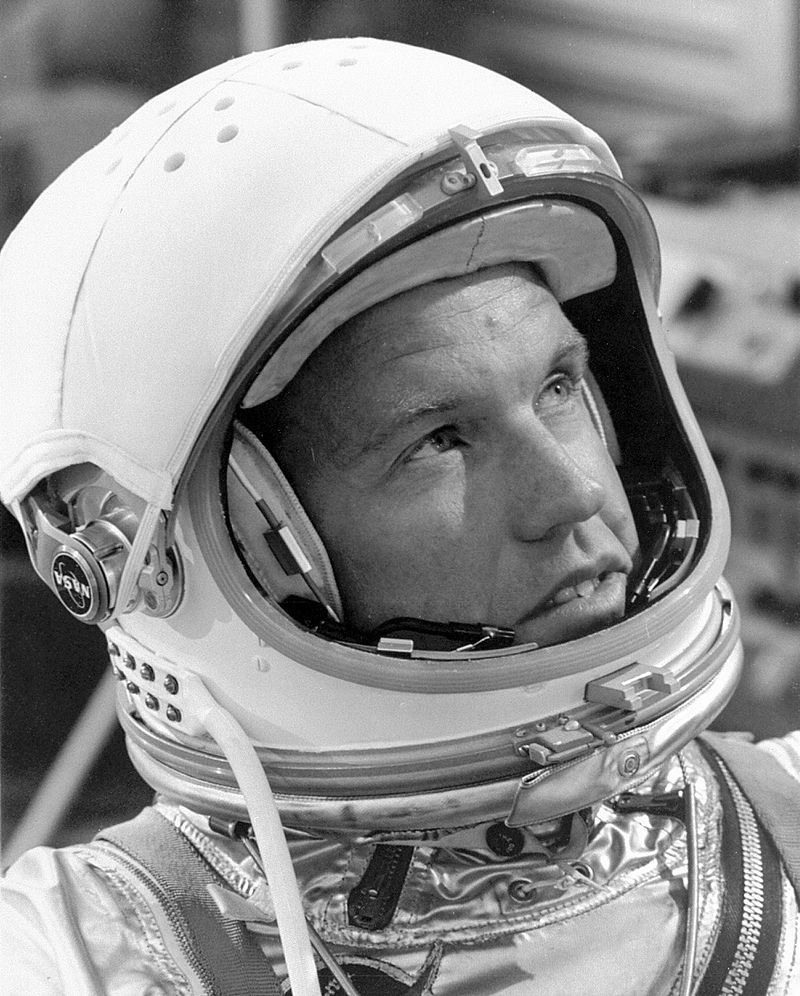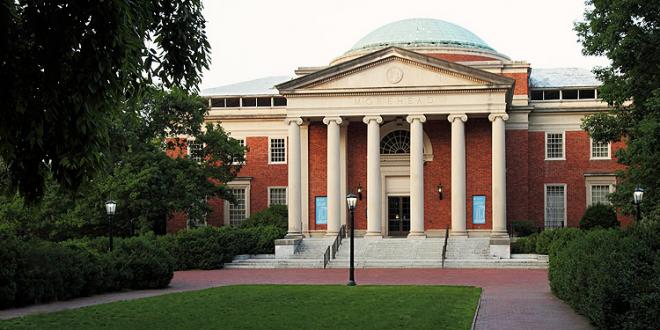Morehead Planetarium opened in 1949, as the first planetarium in the South and the sixth built in the United States. A modern marvel and piece of sophisticated technology when it was built, the Morehead Planetarium was used for more than just star-gazing and educational field trips.
In the ’50s, the planetarium served as a training center for celestial navigation. Rather than train mariners, however, Morehead Planetarium trained astronauts. Beginning in the early ’60s, NASA personnel used the Planetarium as a training stop when travelling between NASA facilities. Working in secret to protect the privacy of some of the most famous men in America at the time, planetarium staff made use of the phrase “cookie time” when scheduling training sessions to avoid attracting attention from prying public eyes.
Crews underwent general navigation training as well as mission-specific exercises to prepare for the possibility of losing navigational systems while aboard their respective spacecraft. Astronauts from programs Mercury to Apollo trained to navigate using key guide stars in Morehead Planetarium, and this training directly paid off in particular for Gordon Cooper.
 Cooper, then an Air Force major, was an astronaut aboard the one-man mission Mercury-Atlas 9. This last mission in the Mercury program would mark the last time an American was launched alone to conduct an orbital mission. Cooper became the first American to sleep in space during his 34-hour mission. His craft, Faith 7, was designed for fully automatic control — a feature that led to Chuck Yeager’s famous description of Mercury astronauts as “spam in a can.” The mission changed when the craft lost all attitude readings during orbit twenty, and experienced a short circuit on orbit twenty-one, however.
Cooper, then an Air Force major, was an astronaut aboard the one-man mission Mercury-Atlas 9. This last mission in the Mercury program would mark the last time an American was launched alone to conduct an orbital mission. Cooper became the first American to sleep in space during his 34-hour mission. His craft, Faith 7, was designed for fully automatic control — a feature that led to Chuck Yeager’s famous description of Mercury astronauts as “spam in a can.” The mission changed when the craft lost all attitude readings during orbit twenty, and experienced a short circuit on orbit twenty-one, however.
With temperatures and carbon dioxide levels in the cabin rising, Cooper prepared a revised retrofire checklist with the help of John Glenn over radio communication. At the end of the twenty-first orbit, Cooper kept the craft angled at 34 degrees pitched down and manually fired retrorockets. He drew lines on the windows to stay aligned with constellations and guide stars as he flew, and used his wristwatch to manually count the burn. As time and miles flew by, it was the stars — and his training at Chapel Hill’s Morehead Planetarium in reading them — that guided Cooper home.
By the time it was over, he not only managed to make his re-entry window, but also execute the most accurate landing in terms of proximity to the recovery fleet of all the Mercury Missions.


